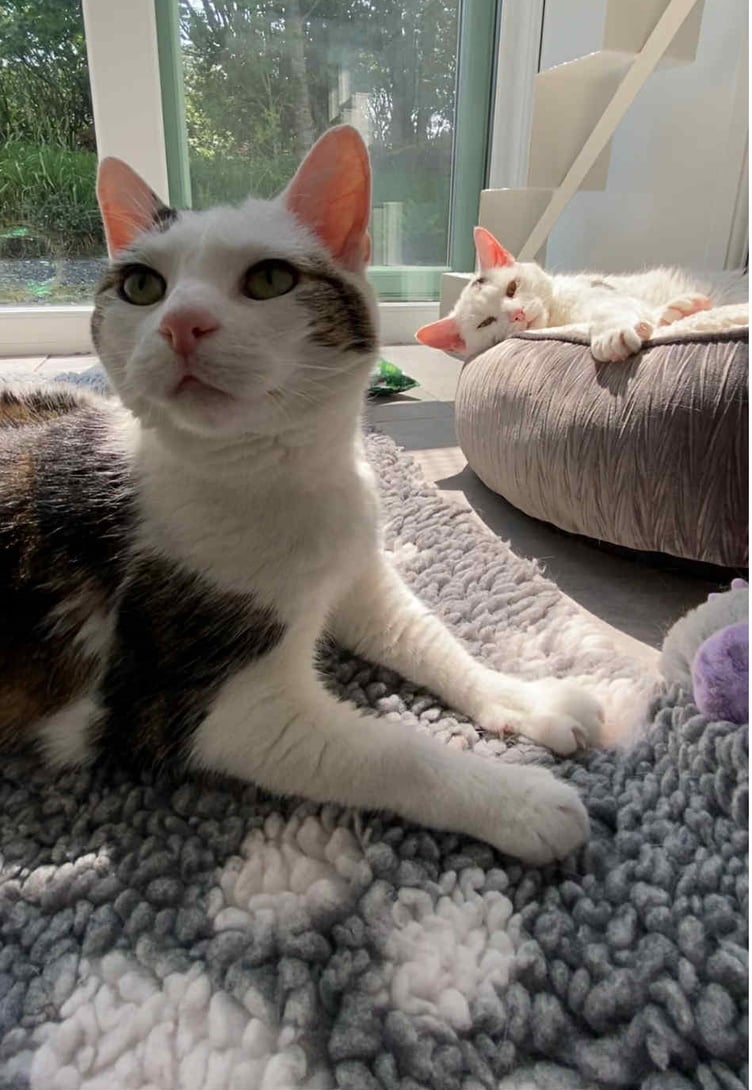Meet Millie and Mollie, 12-year-old sisters who are looking for a peaceful retirement home together.
They are affectionate, gentle ladies who are companionable but also quite independent; and they are both in good health.
They have always been indoor only cats, and so access to the outdoors in their new home would need to be limited. This will be good news for garden birds, particularly those that have chosen the island as the place to raise their young having flown long distances to be here.
One of our most remarkable summer visitors is the swift.
Overcoming starvation, exhaustion and storms, this amazing little creature (only six inches long) flies hundreds of miles from Southern Africa at a cruising speed of 22mph and a top speed of 70mph, often covering more than 200 miles a day.
Not bad going for such a small bird. They are, in fact, the fastest birds in the world in level flight, with the peregrine falcon only achieving a faster speed in a gravity-assisted dive.
They either cross the Sahara or navigate their way along the coastline of Africa. Once they’ve survived this challenge they begin their journey over Spain, climbing high over the Pyrenees and travelling through Western France before hitting UK soil – all in their quest to return to the precise spot where they were born to raise their own offspring.
These little birds spend most of their lives on the wing – they catch insects in the air, and they drink by swooping low over water to take a sip or by catching raindrops as they fall.
They mate in the air and even sleep whilst flying (the only bird known to do this) and no-one really knows how they do it.
It’s possible that a swift can shut down parts of its brain and be semi-conscious in flight; or it may go in and out of sleep in microseconds.
Flying at a high altitude of 10,000 feet (the same as a small plane) seems to help them navigate whilst they are ‘somnambulate’, using wind drift and automatically adjusting their flight to stay on a specific course.
Swifts have perfect bodies for being air born for so long, with their long wings and slender bodies. Nor are they encumbered by long legs (in fact their legs are so short they can’t take off from the ground) or tail feathers, which is the best way to tell them apart from swallows.
Swallows have long tail streamers, red throats and glossy blue-black backs, and although similar in appearance to the swift they are completely unrelated. They are known as the ‘bird of freedom’ because they cannot endure captivity and will only mate in the wild.
The house martin can be identified by its slightly curved tail, and by its white underbelly and rump which can just about be glimpsed as the bird flashes by in its mission to catch insects.
Swallows and house martins make their nests under the eaves of buildings. The nests are carefully crafted out of mud and are cup or oval shaped (and they are often reused year after year), but sometimes they break apart, or sometimes a hatchling can slip over the edge.
If you find a hatchling on the floor and you can’t put it back in the nest, pop it in an empty margarine tub and place it as high up as possible (out of the reach of cats) so that the parents can continue to feed it.
Swifts are slightly different in that they raise their young in wall cavities and in gaps under roof tiles.
And whereas the swallow has a ‘green’ conservation status, the house martin and swift are both classed as ‘red’ – i.e. endangered. We all need to do our bit to protect their nest sites by endeavouring to leave cavities and gaps in our homes and out-buildings, and by not removing old nests.

.png?width=209&height=140&crop=209:145,smart&quality=75)
.jpg?width=209&height=140&crop=209:145,smart&quality=75)

.jpeg?width=209&height=140&crop=209:145,smart&quality=75)